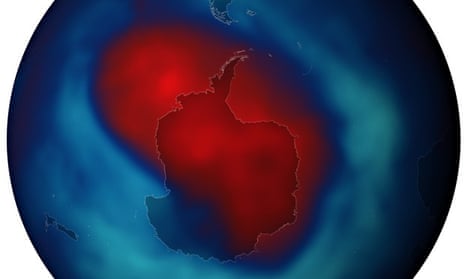More ozone-depleting gases have been identified in the atmosphere by scientists.
Researchers at the University of East Anglia (UEA) have found two new types of chlorofluorocarbons (CFCs) and one new hydrochlorofluorocarbon (HCFC).
The latest discovery comes after the UEA researchers identified four new man-made gases which contribute to destruction of the ozone layer in March, bringing the total number of newly discovered CFCs and HCFCs to seven.
Research published in the journal Atmosphere shows the scientists discovered the latest gases by comparing today's air samples with air collected between 1978 and 2012 in unpolluted Tasmania and samples taken during aircraft flights.
The gases which have been identified in the latest research are at much lower concentrations than those found earlier this year, and are unlikely to pose a threat to the ozone layer, the scientists said.
But the researchers said it supported their argument that there were many more gases out there, which could have a cumulative impact.
Dr Johannes Laube, from UEA's School of Environmental Sciences, said: "Two of the gases that we found earlier in the year were particularly worrying because they were still accumulating significantly up until 2012. We have now identified another two CFCs and one HCFC, although these have much lower concentrations than the previous ones."
Corinna Kloss, of the Julich Research Centre in Germany who undertook the research while at UEA, said: "All seven gases were only around in the atmosphere in very small amounts before the 1980s, with four not present at all before the 1960s, which suggests they are man-made. Where these new gases are coming from should be investigated. Possible sources include industrial solvents, feedstock chemicals and refrigerants."
Controls on CFCs to preserve ozone in the stratosphere that protects life on Earth by absorbing harmful ultraviolet radiation from the sun came into force under the Montreal Protocol in 1989, with a total global ban implemented by 2010.
